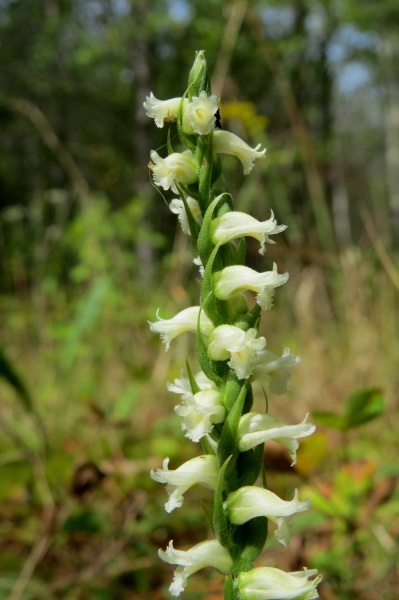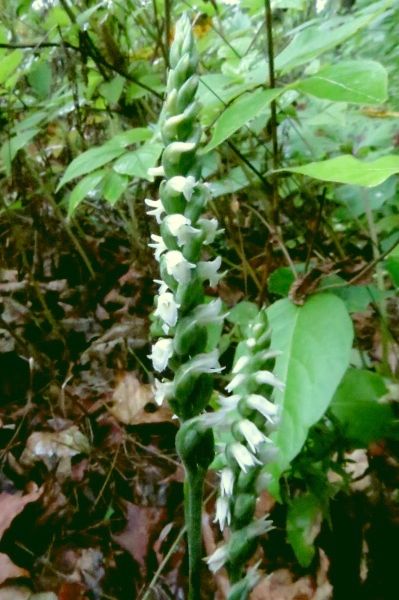
Winter’s not here yet so there’s still time to see fall orchids blooming in western Pennsylvania.
Yellow Ladies’ Tresses (Spiranthes ochroleuca) are relatively common. Standing 4 to 21 inches tall, they grow in dry open habitats such as open woods, thickets or meadows and even by side of the road. Dianne Machesney photographed the one above at Moraine State Park.
October Ladies’ Tresses (Spiranthes ovalis), below, are so rare that they’re listed as endangered in Pennsylvania. Their USDA Pennsylvania map shows them occurring only in Lancaster County.

Despite this status, Dianne and Bob Machesney found them blooming at both McConnells Mill and Moraine State Parks on 19 September 2015.
You can find October Ladies’ Tresses this month in moist, shady woods or thickets, or along the edges of marshes. Keep your eyes peeled for a flower that’s 2 to 15 inches tall.
(photos by Dianne Machesney)
I will have to ask Diane if she found Spiranthes ovalis blooming in McConnell’s Mill at the same spot where I found them last year (I got to report them as the first recorded observation of them in Lawrence County). It is a very pretty plant with the triangular sets of blooms spiraling up the stem.
Mary Ann, yes she did!
I found a small colony of S. ovalis in Lehigh County two years ago, reported it to the Pennsylvania Natural Heritage Program. Posted my pictures on iNaturalist in case anyone wants to see them. Interestingly it was growing in a very trashy woodlot overrun with alien plant species. Even more interestingly, the same woodlot was for decades home to large colony of Pennsylvania’s rarest orchid, the so-called Three Birds orchid… until it was bulldozed into oblivion to make room for a real estate office in the 1980s. BTW I live in Lancaster county and have no idea where S. ovalis was found here. I suspect it was a historical record from an old herbarium collection.
Found a good stand of Ladies’ Tresses blossoming on the edge of a bog (with cotton grass and cranberries) just east of Vintondale (Cambria County) on 10/11/20. Not sure of specific species. Folks on iNaturalist thought they were Alleghany Ladies’ Tresses.